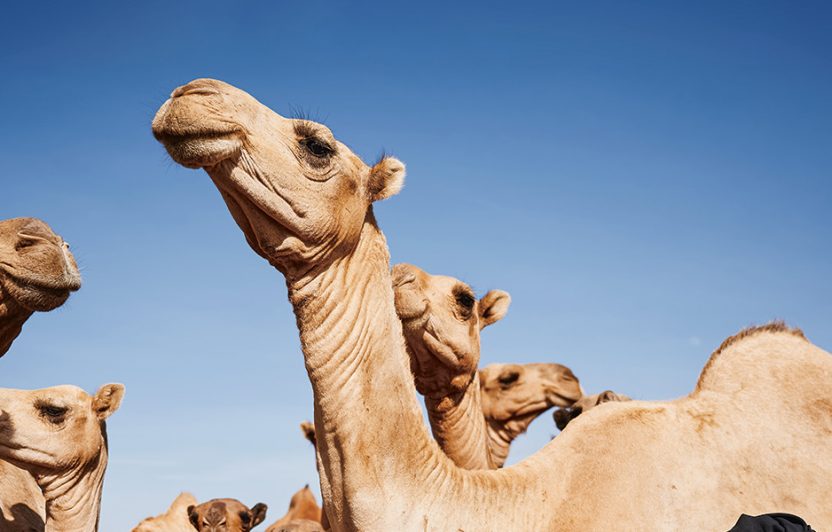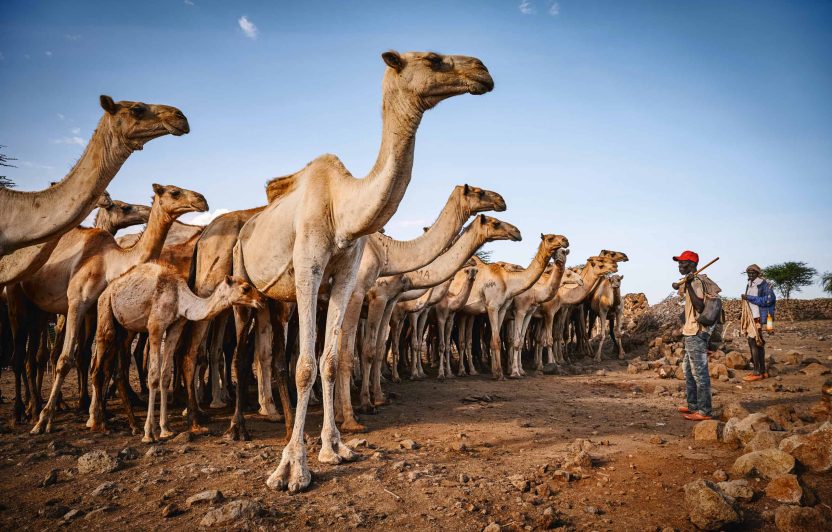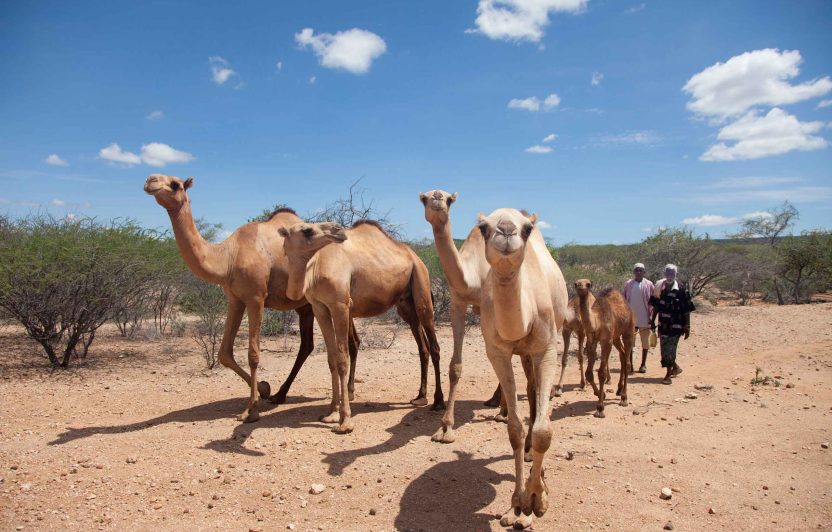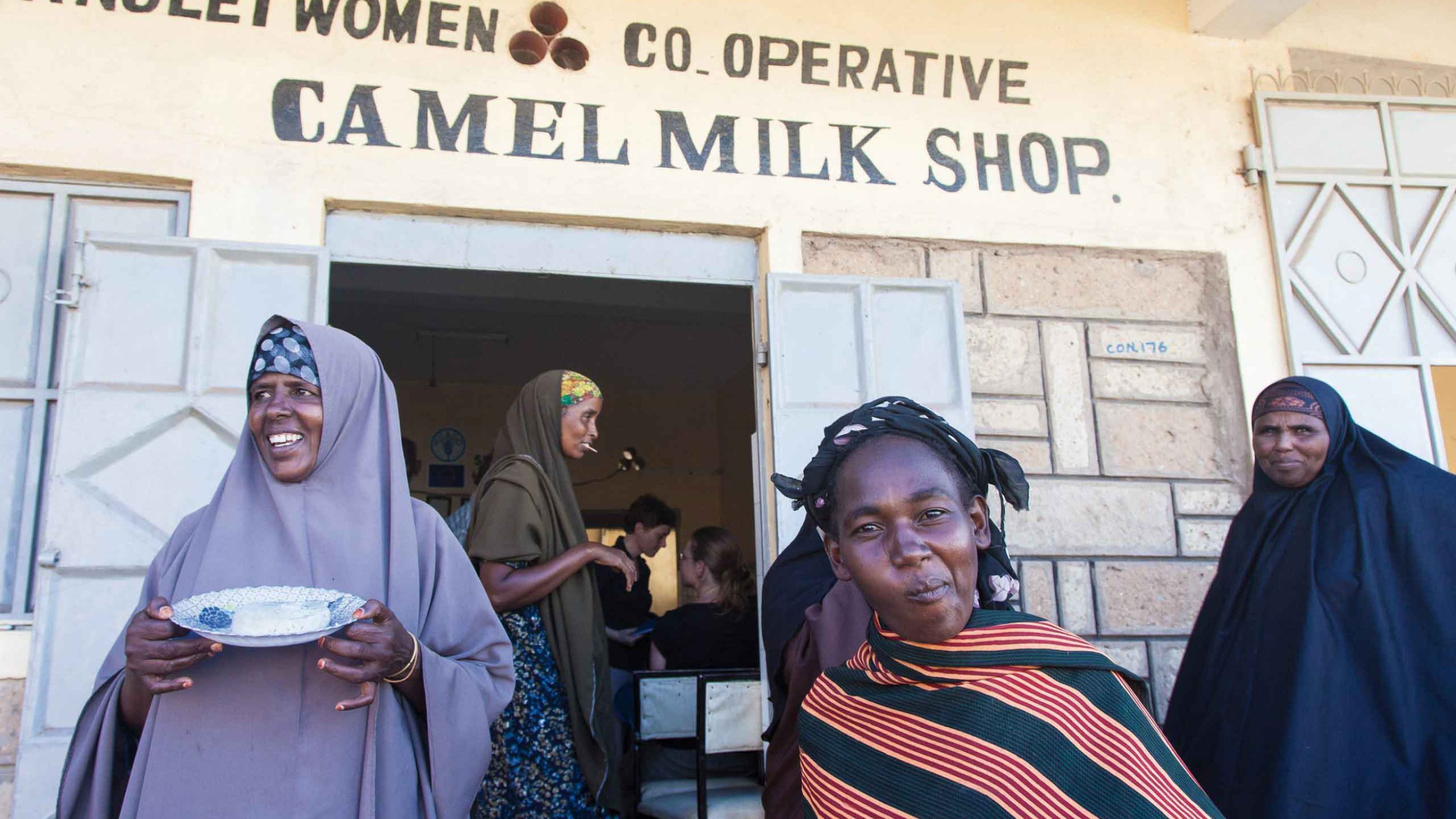

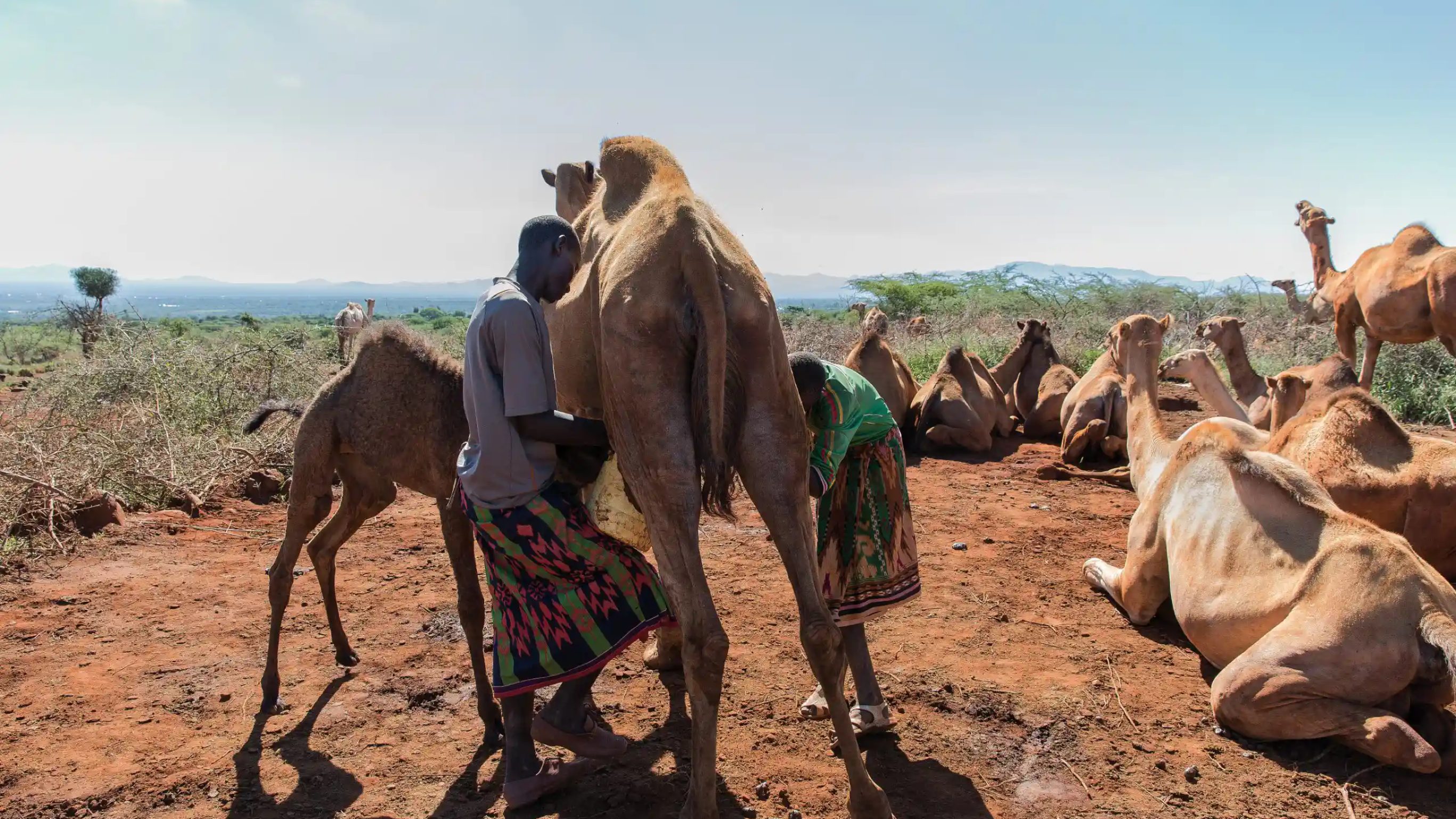
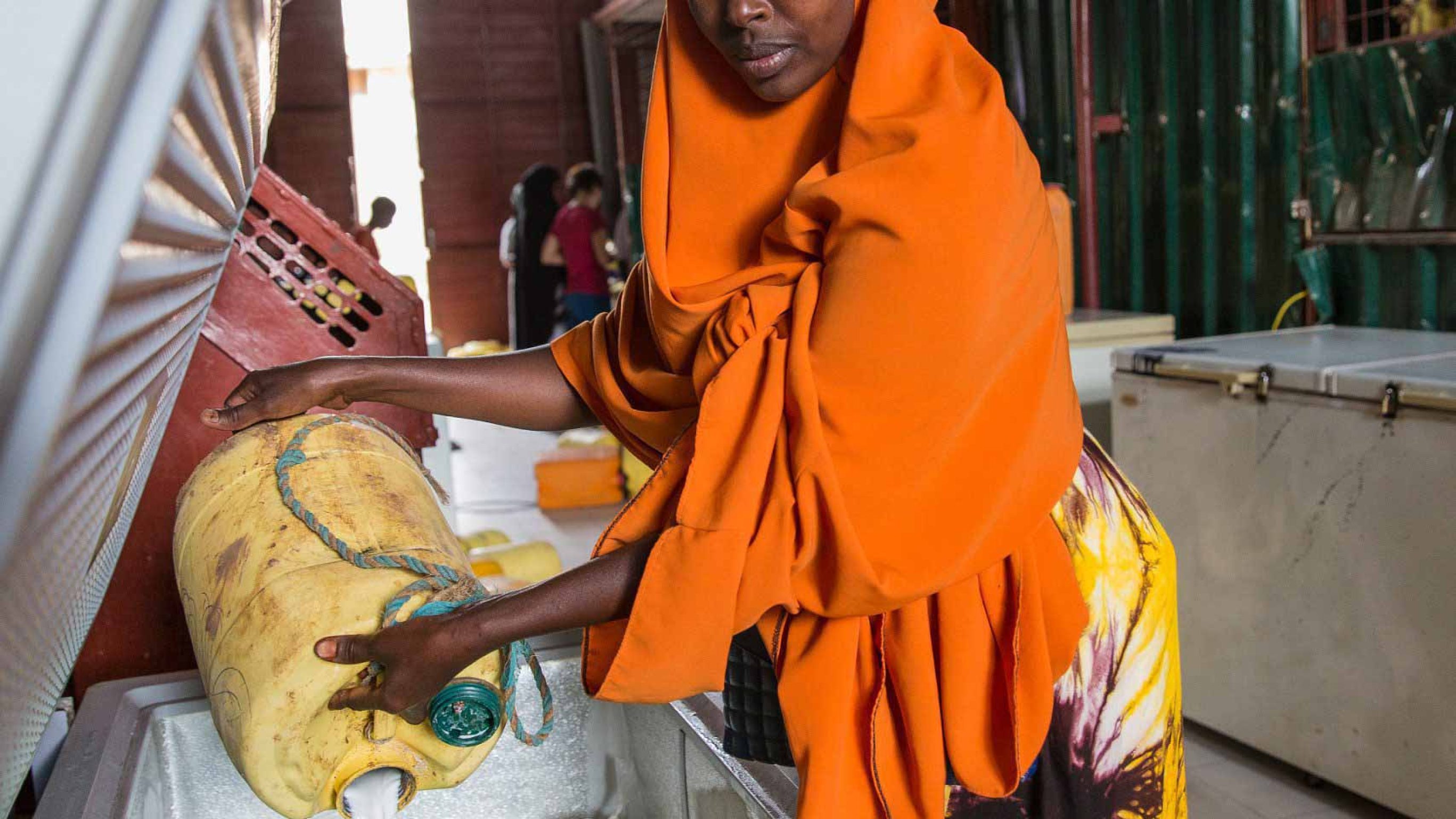
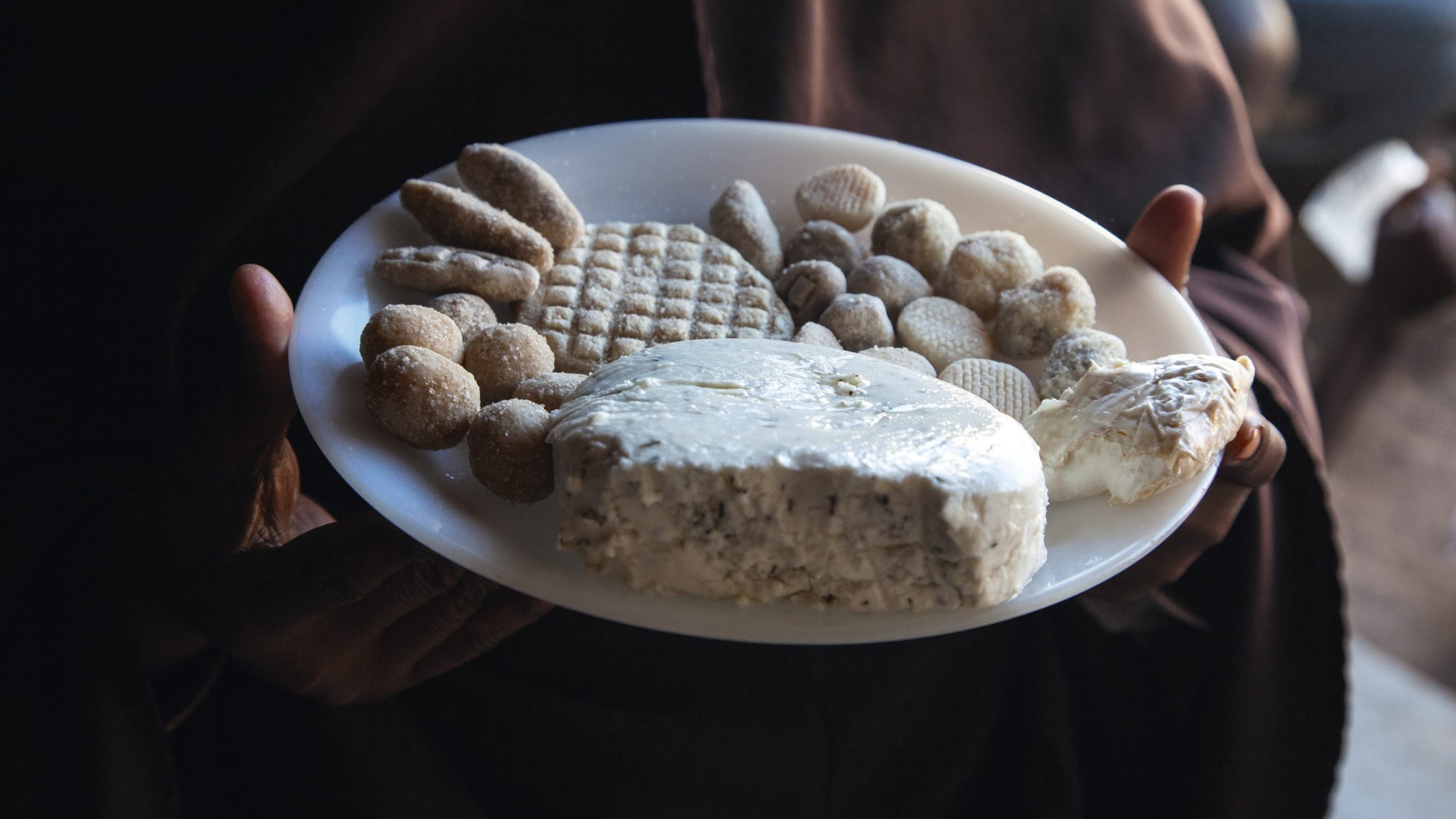
Once milk couriers reach the gravel road to Isiolo on their motorcycles in the remote north-east of Kenya, the most difficult part of their journey is behind them. Their journey usually begins by collecting plastic canisters of milk from camel herders’ camps, far from any roads. Then they must drive the canisters through the rugged countryside (see cover picture). In Isiolo, a town of around 30,000 in northeastern Kenya, members of the women’s Anolei Milk Cooperative impatiently await the couriers. The cooperative’s collection and processing centre for camel milk has been supported by Biovision and Veterinarians without Borders (Vétérinaires sans Frontières, or VSF) Switzerland since 2013. The dairy is an important link in the processing and value chain being established as part of the Camels for Drought Areas project.
Tension at the collection point
The project started by promoting camel farming in drought-prone Isiolo County – especially among ethnic groups that traditionally kept cattle. Camels are much more resistant to drought than cattle. The new camel owners have been trained in keeping camels, animal health and hygienic milking. As soon as the motorcycle couriers arrive in Isiolo, the women of the Anolei cooperative carry the milk canisters into a large building. The air inside is hot and stuffy, and the mood is tense. The milk – up to 3,000 litres on any given day – urgently needs to be cooled before it sours. But it must first be checked and admitted. Deliveries containing too many germs or an excessively high water content will be rejected. At 3 am the camel milk is loaded onto a refrigerated truck and taken to Nairobi, 300 km away. It arrives at Eastleigh Market by morning. Many Kenyans of Somali descent who live there prize camel milk.
Bus transport denied
The cooperative bought a refrigerated truck with Biovision’s support. Before that, milk had to be transported on the roof of public buses. When the crowds were too large, drivers would refuse to transport goods, leaving women with their perishable milk at the roadside. Camel milk had often soured by the time it arrived in Nairobi after hours of travelling under the hot sun. The proceeds from selling the milk go to the Anolei cooperative to cover storage and transport costs. The camel owners receive approximately 60 to 80 Kenyan shillings (KES) per litre of milk. Each animal can produce around 3 litres of milk daily, with the precise amount depending on the animal, its health and the season. During the approximately one-year lactation period of a mare, an owner can earn 40,000 to 80,000 KES (approx. 380 to 760 Swiss Francs) per camel. The owner’s family also drinks some of the milk, which contributes to a healthier diet.


